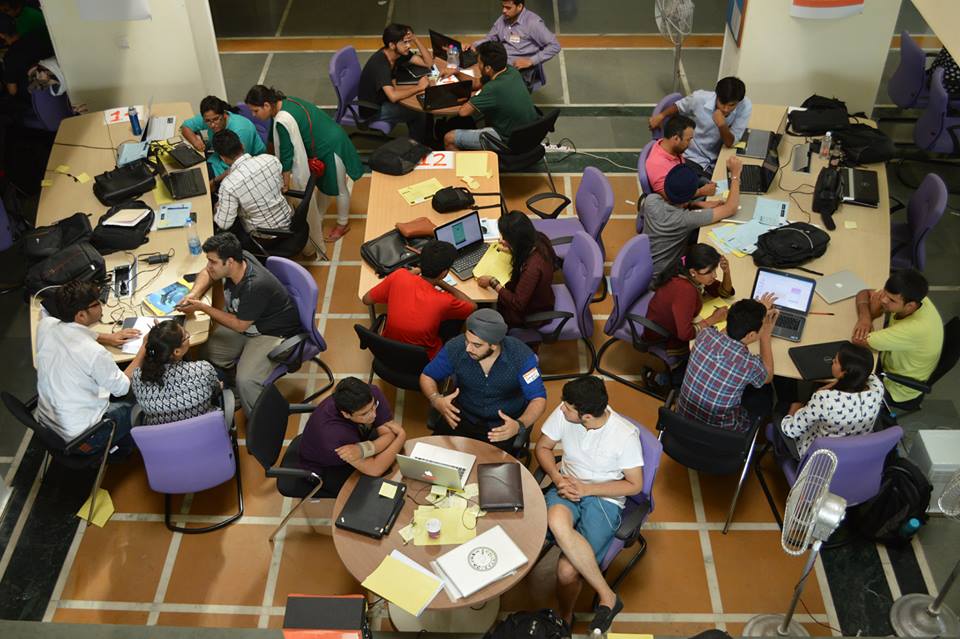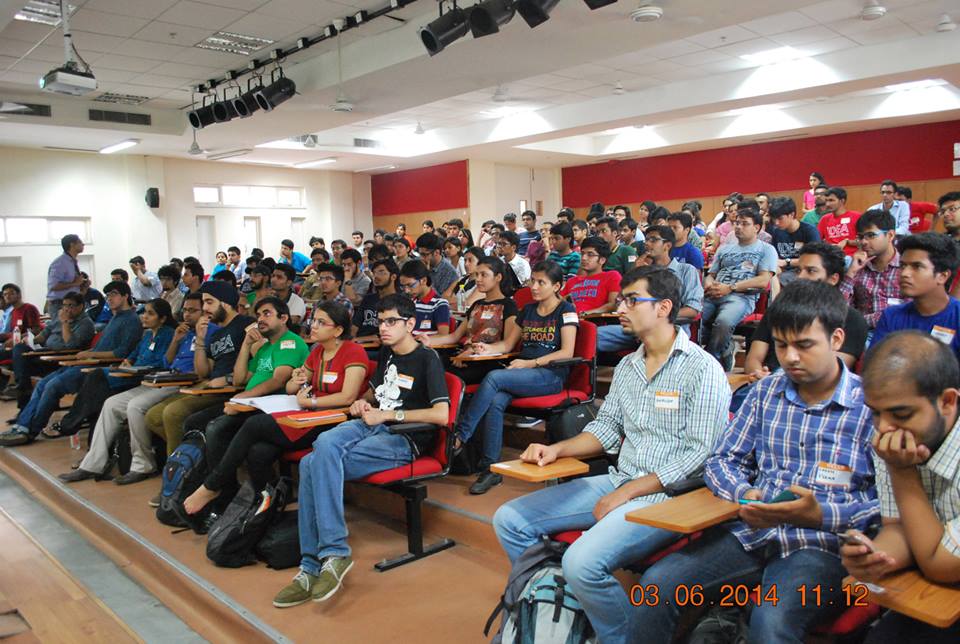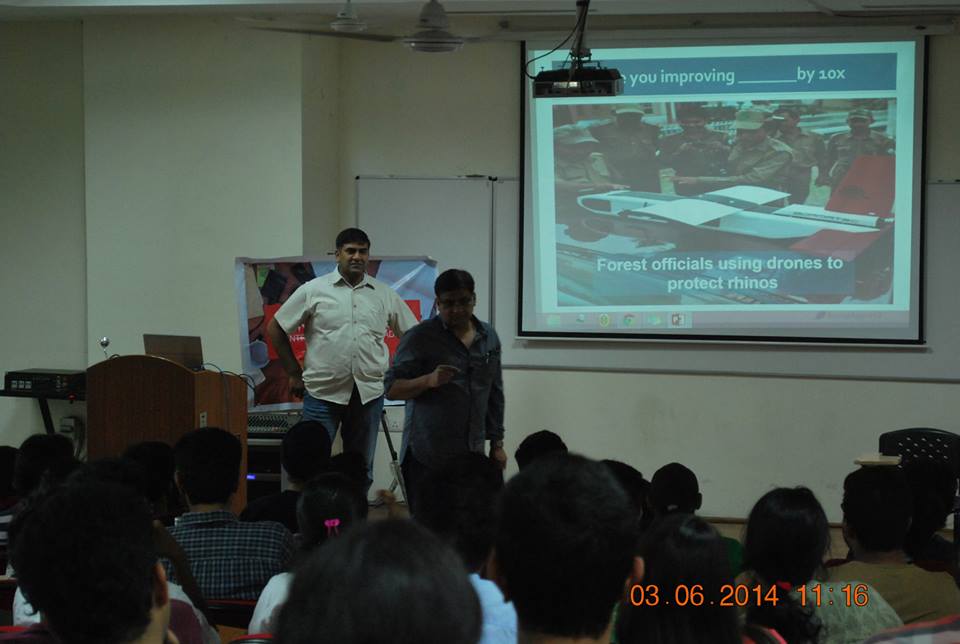In 1986, when I graduated from IIT Kharagpur as a Computer Science major, I had picked up an obsession with building products. Soon after college, I had joined DCM Data Products. DCM like other players in the Indian market, were very focussed on product development, as the product culture for designing computers, or writing compilers, etc was prevalent in that era. We as any other product company at that time were focussed on the fundamentals, such as, what a product should do, who would use such products, how we would market the products and how are we going to support such products.
As the outsourcing business kicked off in India, in 1991, the focus had suddenly shifted to a services mind-set where the question had suddenly changed to how efficiently and effectively can we utilize the 40 man hours in a week. The focus in the industry had pivoted from building a product to becoming a programmer, from market access to talent factories. Although India had built a 100 billion dollar services industry in this time period, we had also effectively moved back 20 years in the product industry.
Market Understanding is the key to building products
I had joined Polaroid – the leader in instant and chemical photography in the late 90’s. I had first-hand seen a how a dominant market leader was blindsided by major disruptions. Polaroid had a tough time adapting to the shifting consumer trends towards digital. The company had spent lot of time and resources in converting film’s to digital and digital to film, however, what the executives did not see that the Polaroid, was that film had no chance to survive in the digital medium.
 Eventually the company filed for bankruptcy and was sold. I had moved on earlier to Adobe, a company that was a leader in the software product space and was just setting up shop in India. Adobe was a solid product oriented company, with a lot of innovative products and a lot of leverage in the market. We had almost 5-10 million users for each products, and just sitting in on such big products gave us a huge amount of education. The challenge we had against was, could we build a product culture at the India office. The opportunity came after a couple of years after working as extension teams to the major products. We got the opportunity to “own” a full release of PageMaker. Since the core team was busy with building InDesign 1.0, PageMaker had been neglected and revenues were declining as the ecosystem of operating system, creator applications, graphics, printing etc had moved on. The task was to update the product on an “old” and complex code-base with minimal resources such that the revenue decline could be slowed down, enough to give InDesign a good chance in the market. We identified a lot of opportunities in the usage workflow, which our competitors did not take advantage of. These along with in numerous byte sized elements that had incrementally improved the product allowed us to present a case to the executives. The management had fortunately agreed to take on this mammoth task of transforming page maker. It turned out that the PageMaker 7.0 release increased the revenue 1.5x times and extended the long-tail significantly far in excess of the expectations.
Eventually the company filed for bankruptcy and was sold. I had moved on earlier to Adobe, a company that was a leader in the software product space and was just setting up shop in India. Adobe was a solid product oriented company, with a lot of innovative products and a lot of leverage in the market. We had almost 5-10 million users for each products, and just sitting in on such big products gave us a huge amount of education. The challenge we had against was, could we build a product culture at the India office. The opportunity came after a couple of years after working as extension teams to the major products. We got the opportunity to “own” a full release of PageMaker. Since the core team was busy with building InDesign 1.0, PageMaker had been neglected and revenues were declining as the ecosystem of operating system, creator applications, graphics, printing etc had moved on. The task was to update the product on an “old” and complex code-base with minimal resources such that the revenue decline could be slowed down, enough to give InDesign a good chance in the market. We identified a lot of opportunities in the usage workflow, which our competitors did not take advantage of. These along with in numerous byte sized elements that had incrementally improved the product allowed us to present a case to the executives. The management had fortunately agreed to take on this mammoth task of transforming page maker. It turned out that the PageMaker 7.0 release increased the revenue 1.5x times and extended the long-tail significantly far in excess of the expectations.
The Innovation Bug
When you get hooked onto new and innovative stuff it gets harder do the maintenance sort of stuff. I started Adobe Connect, and also Adobe Enterprise Effort. Adobe in India had however at that time moved its focus in maintaining some of its older products, and I had then decided to move away to join a video start-up and learn how to build a product and a business from grounds-up, with a view to move to my own start-up in 3-5 years. The start-up was in video play-shifting, a similar solution to SlingMedia, where a user can take a video signal and encode it, and using a wire transmit the signal remotely to where the he is. We implemented a local area, wi-fi based video streaming and a peer-2-peer protocol for tunnelling video to a remote user. We got a NASSCOM innovation award for this product. However, one of the founders of the company had a tainted record with an IPO/investors and though we had great technology and user traction, it was impossible to raise funding unless the founder was removed from the company (which he did not want to let go). Since I was directly involved in meetings VCs and investors at that stage, I felt that the possibility of collateral damage to my professional reputation was very high given the founders manipulations and therefore I decided to exit from the company to launch my own start-up.
We launched Movico where we tried to establish ourselves in the video transactions space. The idea was to build a tool that would allow content owners to build scene based metadata and indexes for their video collections and we would offer tools for the users to extract, join, create new content online. In hindsight, we were way ahead of our time and especially after the 2008 economic turmoil, the funding needed to build the product and business had dried up. We had to can the product and look for alternate ways to keep going. So we turned our strategy around a bit, went into OPD services, built a reasonable revenue base and started looking at mobile apps.
Filmy Filmy!!
A couple of years ago, my friends started a mobile distribution company, Lava, focussed on brining tech/manufacturing from China and building a distribution brand in India. They did rather well and scaled the business to top 5 local Indian brand level within 18 months. In 2011, they asked me to help setup a smartphone team/capability for them since it was clear that android was going to be huge disruption for the phone business. I got the chance to understand the phone ecosystem – from chips to software. I could see that for Lava to be successful in the smartphone space, we would have to move into a premium zone. So I helped build an Android R&D / competency centre. This attracted the high-end players to speak to Lava. One such player was Intel, who were looking to get into the phone business but not finding any takers. I realized that Lava could gain significantly with Intel as a partner. The profile could change. We negotiated to bring the Intel technology to the market under a new brand, Xolo, pitched as a premium brand with “Intel Inside” (Xolo today is a well known brand by itself).
The association with Lava had given me some useful insights into what the Indian consumer was looking for, and based on this I decided to move away from the device side to focus on building a portfolio of apps that were primarily in the content space – News, Film, Movies, Songs, Indian books and Indian Magazines. My gut-feel is that once the smartphone pricing falls under Rs. 2500 level (I expect this to happen Q4 2014) the demand for consumption of this Indian/local/regional content will be large and we can build a large digital media business powered by apps/server side technology. Although we had many competitors in these areas like Gaana.com, we knew that our expertise with video, content algorithms, focus on integrating new technology to deliver consumer benefit would win in the long run.
An example of this is our app “Filmi Filmy”. The market has over 7-10 major hindi film music apps. However, none of them have a great video experience. At the same time consumption from YouTube has been growing rapidly. Content owners have published over 10,000 free movies and over 30000 free songs to YouTube. Using some smart algorithms and our video technology expertise, we have launched the first ever chitrahhar-on-the-go app, Filmy Filmy. It brings your favourite film songs with the original film tracks for you to enjoy in video. And we plan to build an ecosystem around this – sharing playlists, screen shots, quizzes, memes – ideas to engage the users and let them create new content. Make the video transactional (going back to our Movico idea). I’m happy to say that within 3 weeks of launch, we were the top new music app in India. We were featured at #8 in the indian app store in the music category in India and #1 in Pakistan. We are currently grossing over 1000+ downloads/week. Soon we will have Android and Windows version of this app ready.
Innovative Business Models and Market Understanding is Key
With Filmy Filmy, we have implemented unique business models built around in-app purchasing. We knew right from the outset that this was not an App we can charge a premium for. Even if we went down the advertising route, we would need close to 4-5 million downloads for the product to be sustainable. Hence, keeping this in mind, we went down the in-app purchases route, that allows users to purchase and create his own own playlist and share this with his friends. For example, on Valentine’s Day, we had allowed our users to create a playlist to express his emotions and share this with his beau. We were quite interested to see that this model had gained quite a lot in terms of traction and revenue.
We currently target the Indian Diaspora, such as the Middle East, SEA, etc. We provide limited content access for free, but we monetize through some innovative means. Product Managers usually play an important role in understanding the market and identifying the right channels to monetize this content. My passion is to be ahead of the market so I am always trying things. Sometimes it works, sometimes it does not. But the team has a fun time all the time.
India as a Product Nation
A lot of young companies come to me saying, that we are doing an Indian version of a US business model. What sorely seems to be lacking in the pitch is the consumer profiling on how their unique solution will tackle a real world problem. I believe that one is to one direct modelling of US business models may not work. I would much rather here a pitch from an Indian company which states that they have the market insight to say that there is a large enough need in our Indian Audience, and our solution can meet that need in an innovative way. The focus should change from “we can do it” to “we know this about the Indian Consumer”. However, I’m very excited that the product industry has now matured and is no longer learning to walk, we’ve reached a point where we can run.

 I had found my core argument for the day – I was going to challenge the group to think of their own personalities, experiences, behaviours. I was going to inspire them to reflect on who they are, and who they want to be and how they would differentiate themselves first before thinking of great, differentiated, innovative products that they would design, develop and bring into the world. I would show them how living (and using) on the edge of technology is almost a pre-requisite to pushing the boundary further; how great ideas evolve from personal needs and small advances which turn into big stories cause as the follower crowd discovers the same challenges when their use graduates and are happy to use the solutions the leaders have created.
I had found my core argument for the day – I was going to challenge the group to think of their own personalities, experiences, behaviours. I was going to inspire them to reflect on who they are, and who they want to be and how they would differentiate themselves first before thinking of great, differentiated, innovative products that they would design, develop and bring into the world. I would show them how living (and using) on the edge of technology is almost a pre-requisite to pushing the boundary further; how great ideas evolve from personal needs and small advances which turn into big stories cause as the follower crowd discovers the same challenges when their use graduates and are happy to use the solutions the leaders have created. As I look back at the end of the week, I find myself thinking again about the ‘conformity” of our post-independence indian culture; the regimentation of our education system and our social expectations that we need to break first before disruptive, revolutionary innovators and entrepreneurs will emerge. Hope this brief note makes you think a bit about yourself!
As I look back at the end of the week, I find myself thinking again about the ‘conformity” of our post-independence indian culture; the regimentation of our education system and our social expectations that we need to break first before disruptive, revolutionary innovators and entrepreneurs will emerge. Hope this brief note makes you think a bit about yourself!

